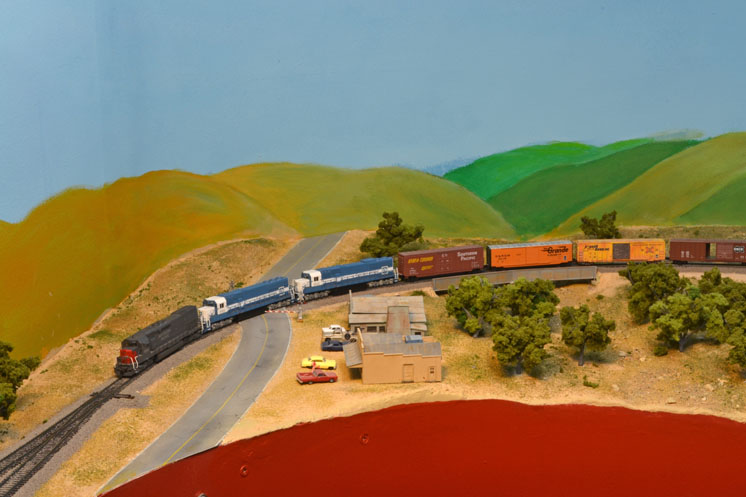
The horseshoe curve at Caliente is typical of such curves, often found on mountain railroads. A line will follow a river or creek upstream, then cross the stream, reverse direction, and continue climbing on the opposite bank. Back in the 1870s, the Southern Pacific followed Caliente Creek from the San Joaquin Valley up into the mountains. At Caliente, the railroad crossed the creek, doubled back on itself, eventually wound its way over to the Tehachapi Creek canyon, and topped the mountains at the town of Tehachapi.
What does this discussion have to do with N scale? Well, for one thing, a horseshoe curve in N scale has some design advantages over HO, assuming we’re looking at a typical basement space, and it’s more than just a matter of N scale’s smaller size. It has to do with the size of the trains relative to the size of the operators running them.
On layouts built in any scale, we often need return curves at the ends of peninsulas. Such a curve can be viewed from the outside (as is the case with the model of Caliente at the HO scale La Mesa Club in the San Diego Model Railroad Museum), but a horseshoe curve can also be viewed from the inside. That’s where I want to be, because that’s where I most enjoy watching trains at Caliente in real life. And that’s where N scale’s planning advantage comes in.
The N scale advantage
My 18″-minimum-radius curves give me a 3-foot diameter half-circle return curve, which I placed at the end of a 30″-wide aisle. The entire curve scene requires only 4 feet of width and gives me enough space to model the features I’m really interested in at the curve itself while allowing me to minimize the space given to the trackage leading to it.
Building the same scene in HO using roughly equivalent 33″ minimum-radius curves would give you a curve 51⁄2 feet across, a scene at least 61⁄2 feet wide, and either more layout depth along the sides or a wider aisle than you’d probably want unless you’re building a very large home or club layout. Since the trains enter this alcove on one side and come out on the other, the aisle can be a little narrower, as you don’t need room for operators to pass each other.
In N scale I can have my horseshoe curve as well as more layout on the far side of the backdrop in less space than the curve alone would require in HO. My high backdrop completely isolates the rest of the layout for a wraparound effect.
A stereophonic valley
I enjoy being able to stand inside the horseshoe, particularly as the track is climbing the whole way. The lead locomotives are on my right, the caboose is 2″ lower and on my left, and in the middle are the mid-train helpers. This is the way I most enjoyed viewing the prototype, and it brings back fond memories.
The experience will be even better once I have more locomotives equipped with sound so I can have diesels rumbling in each ear. Jim FitzGerald, who introduced me to Tehachapi Pass and Caliente back in 1979, likened the experience in the Caliente Creek Valley to railfanning in stereo.
Pros and cons
On a layout set in the mountains, turnback curves are scenic assets that help us gain longer mainline runs. On prairie railroads, curves are usually a design challenge necessitated by the fact that we’ve come to the end of the basement.
Why this particular curve? There’s some neat stuff at Caliente – highways, a grade crossing, and a post office. Throw in the confluence of Caliente and Tehachapi creeks, and a couple of bridges, and it’s pretty darn interesting for a little town in the middle of nowhere. For me the history of the place and my memories make it even more meaningful.
I love having Caliente just a few steps away in my basement.
This article originally appeared in the May 2017 issue of Model Railroader – Ed.






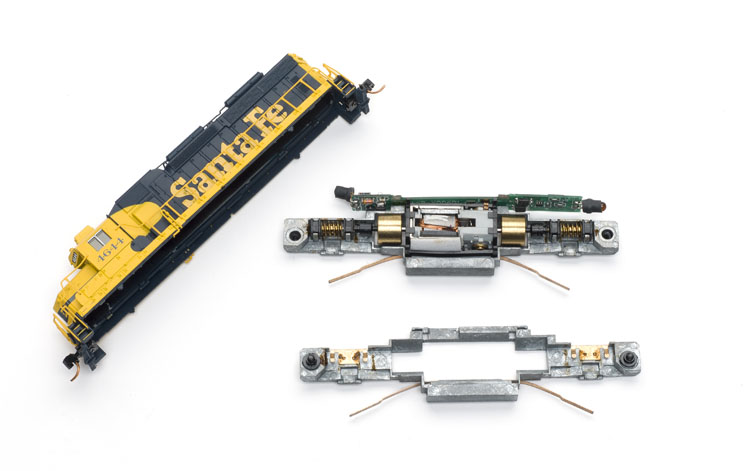
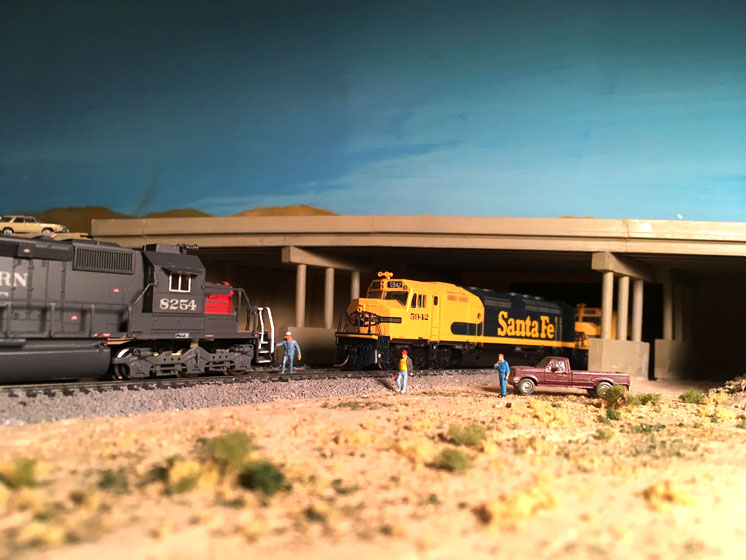
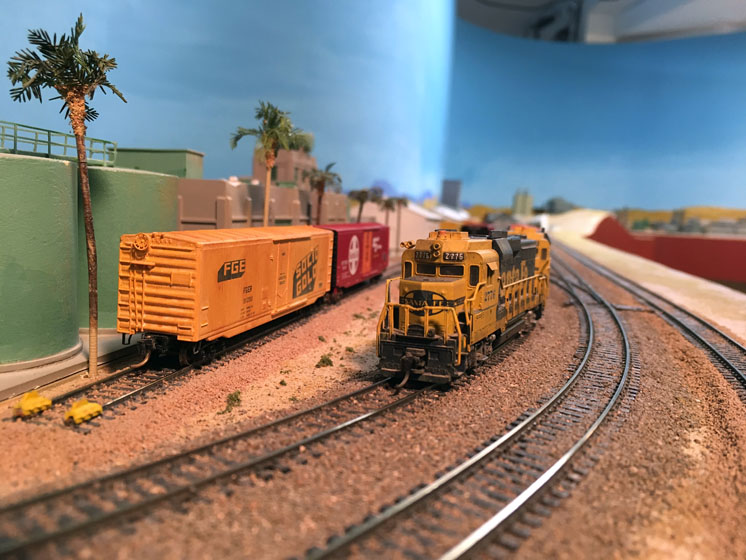
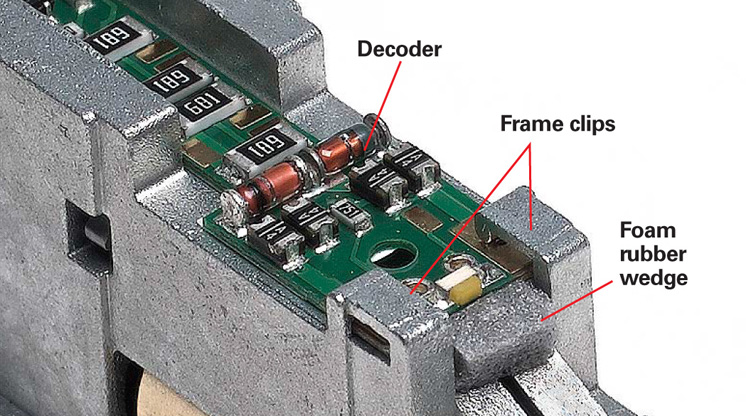




Thanks for sharing your thoughts and the photo Jim. I still cannot figure out why your fabulous “Dream Layout” …….”The Cricket” from MRR January 94, is not included in the well touted, more than 500 online archived layout plans. In my humble opinion it’s still one of the best I have ever come across. I am still battling on trying to modify it to fit in my 20′ container, here in Israel we have neither basements nor largish spare rooms ……..it means removing the peninsula, which I’m still reluctant to do but including it leaves the aisles much too narrow. Thanks again for sharing.
Jim,
You really have done a great job modelling such an iconic location. Great article too, by the way, keep up the great work! I really look forward to them and seeing parts of your layout is a real bonus. Having spent many, many hours at Caliente myself, I can easily understand why it brings back such fond memories. I too hope to someday include it on a layout of my own so I can go visit anytime I want to without having to fly all the way from down under! Thanks again Jim, looking forward to the next N Scale Insight.
Trev